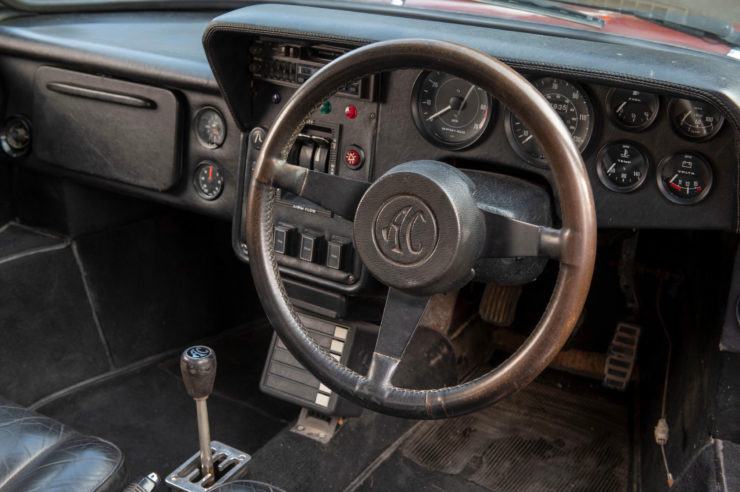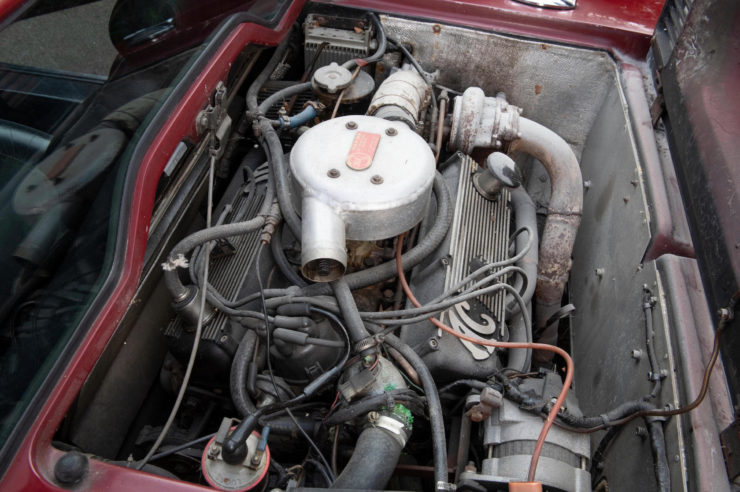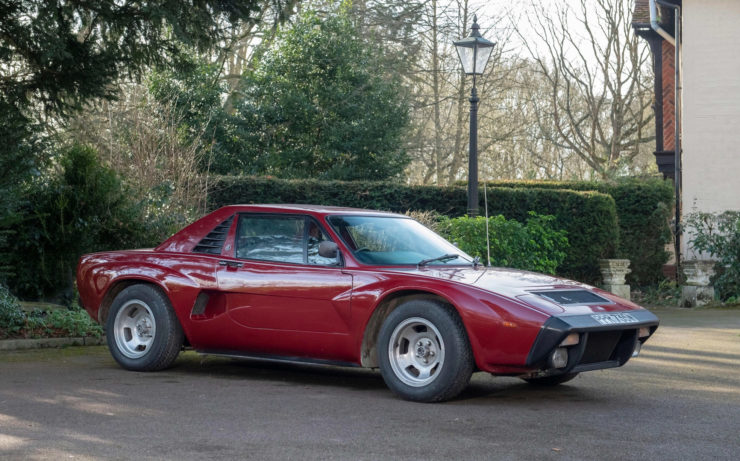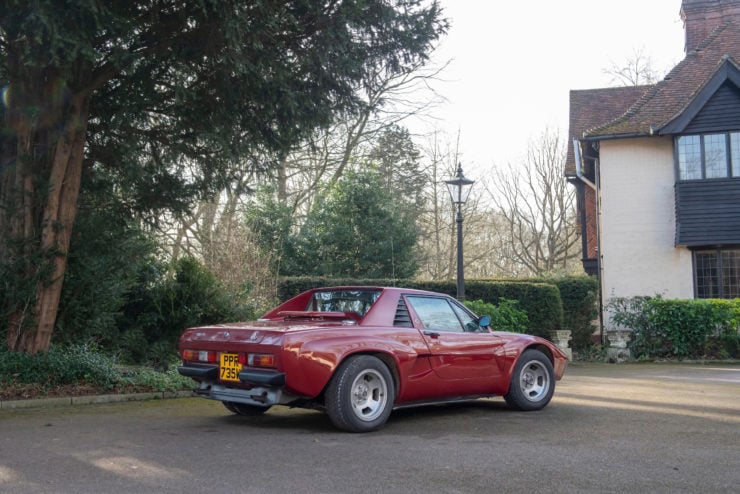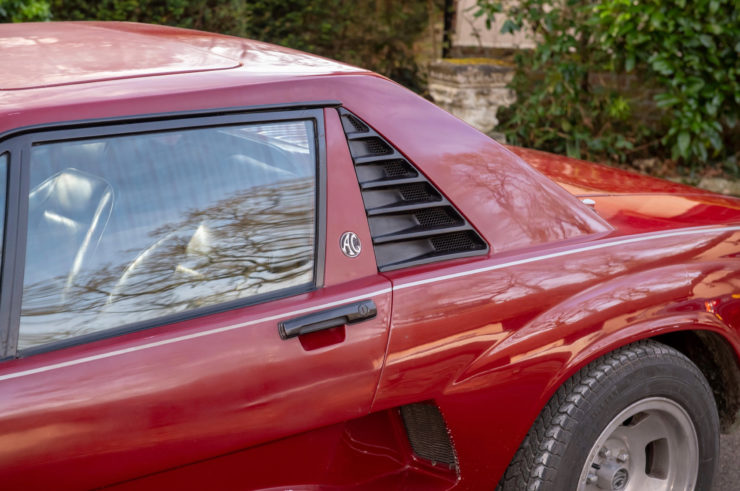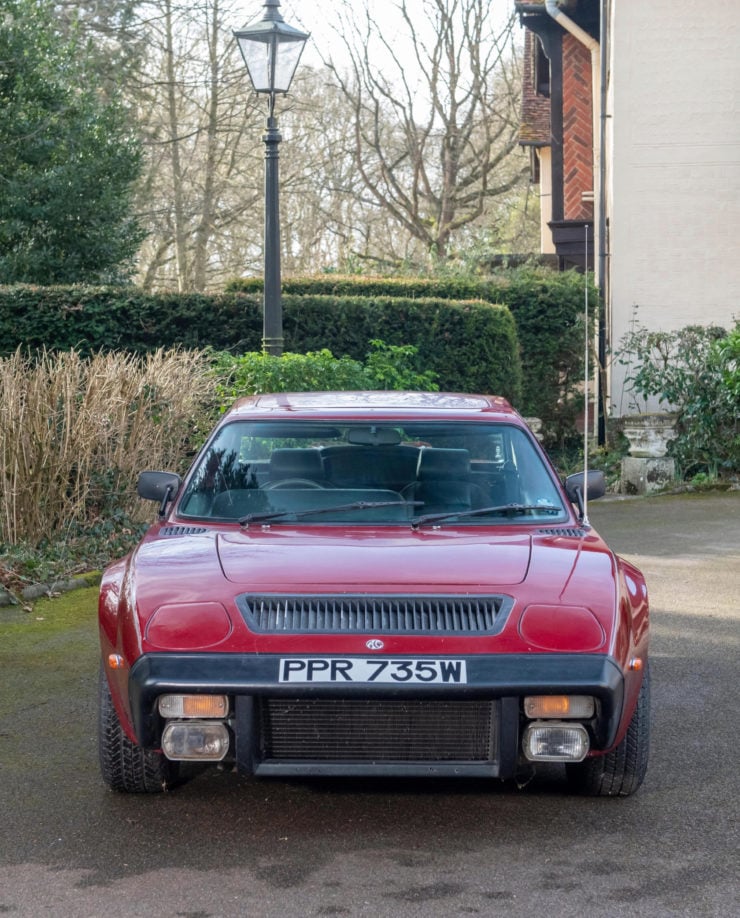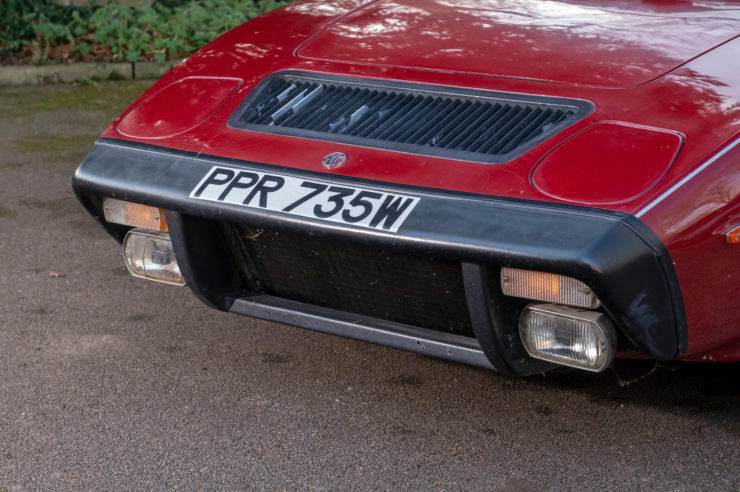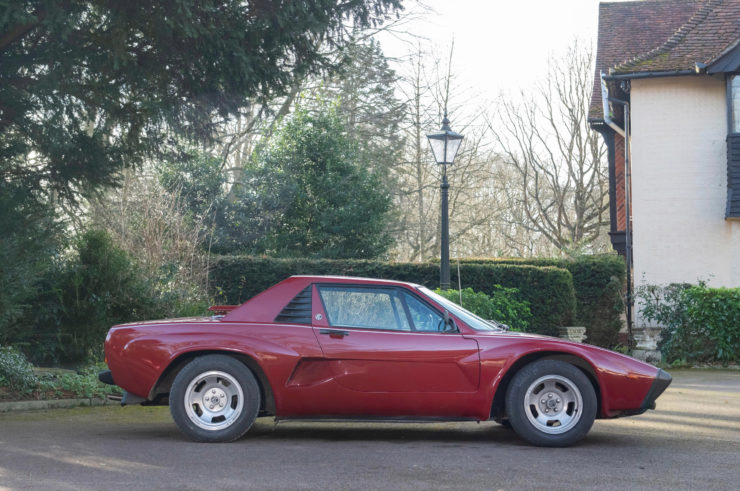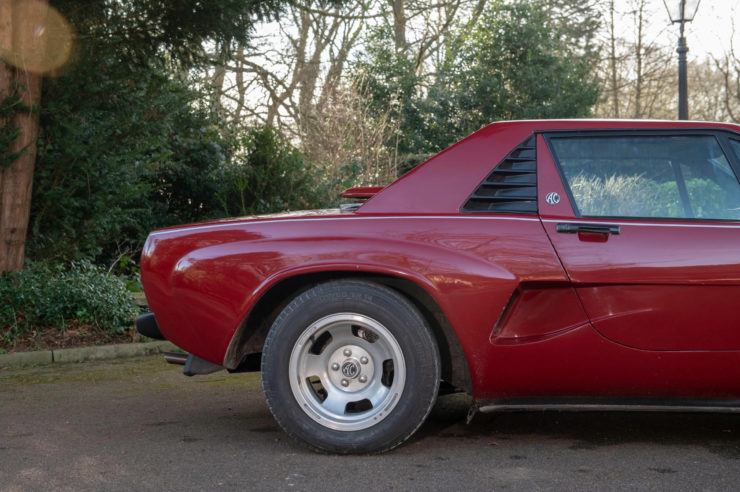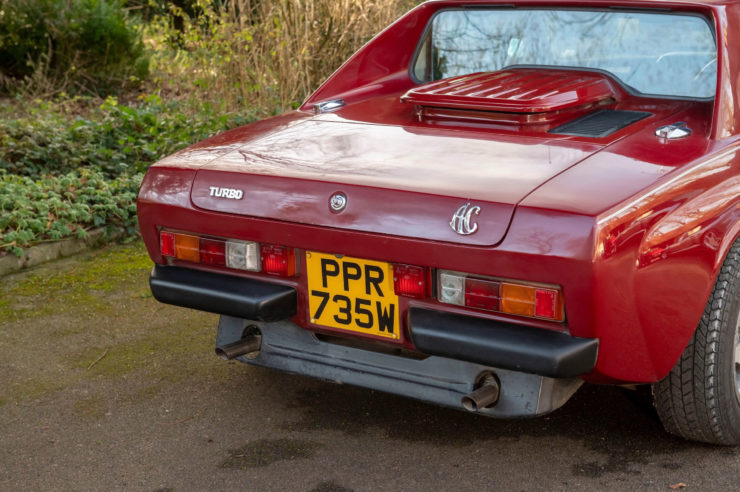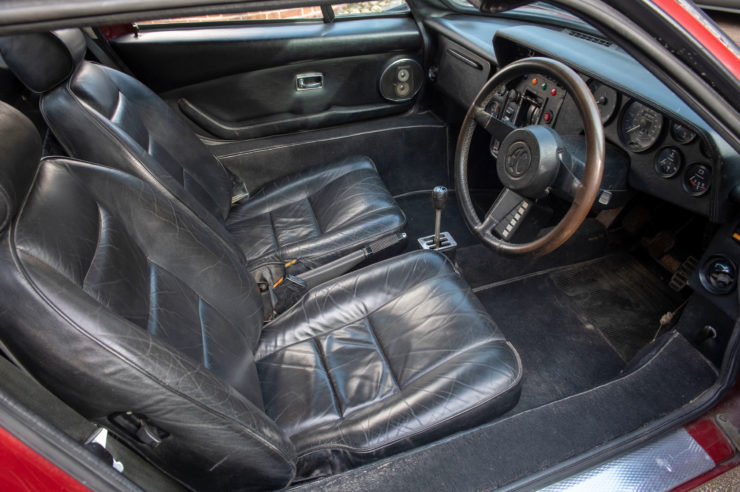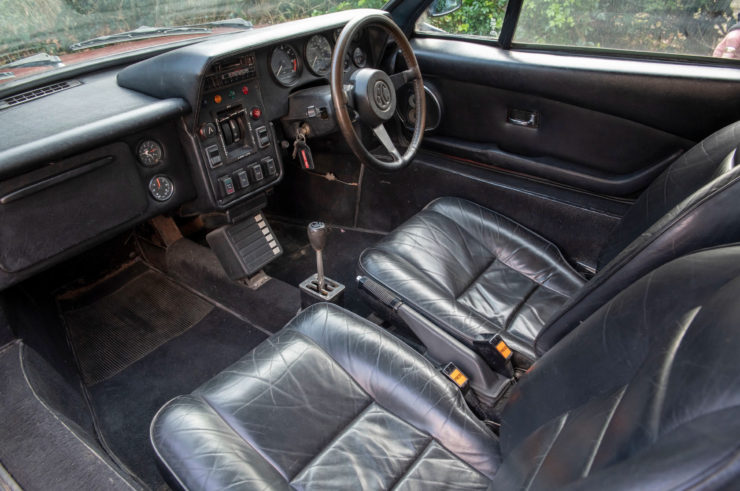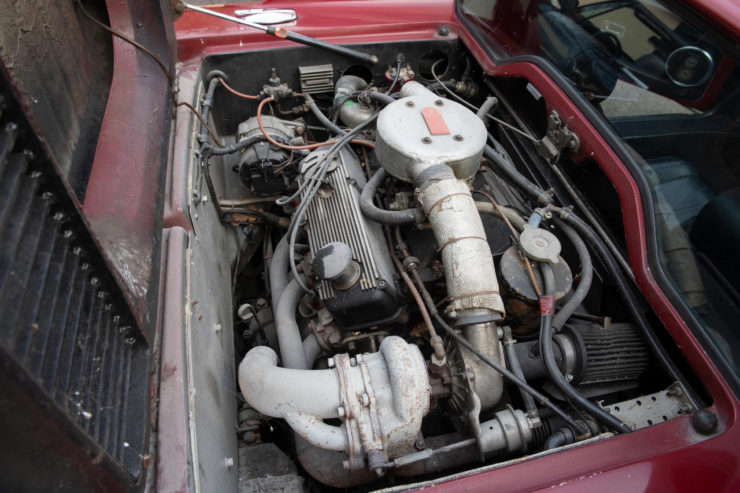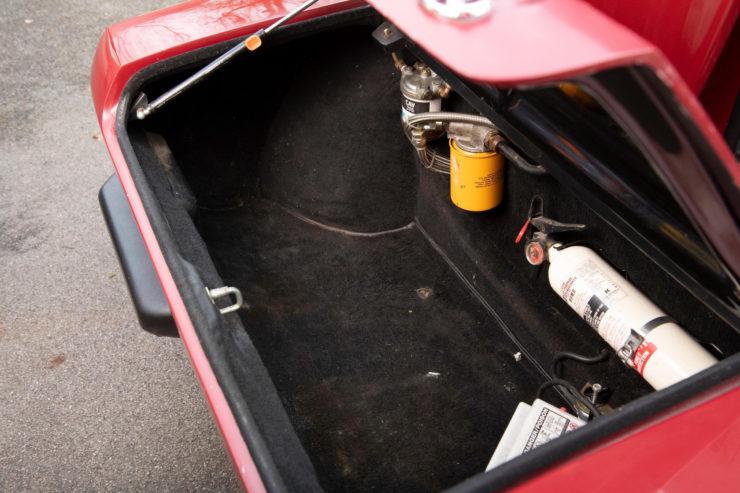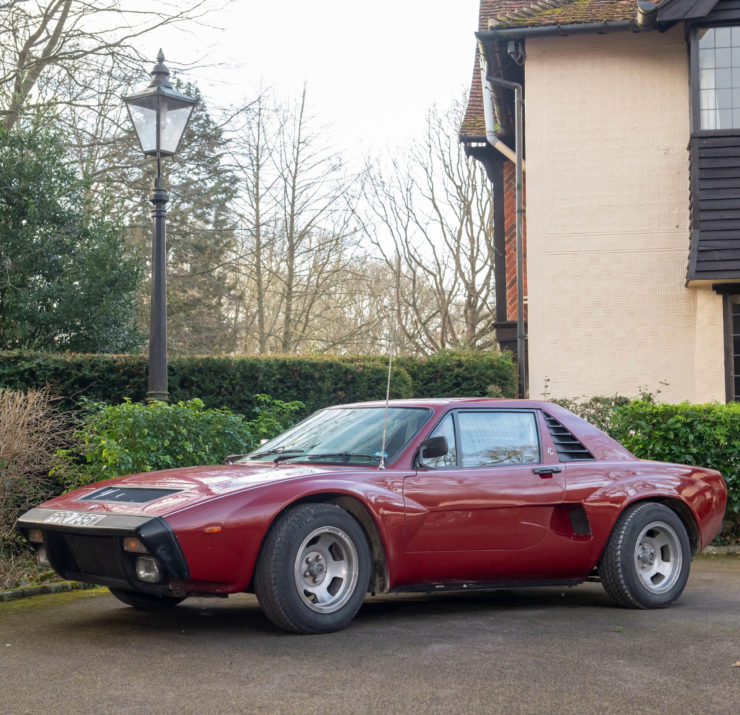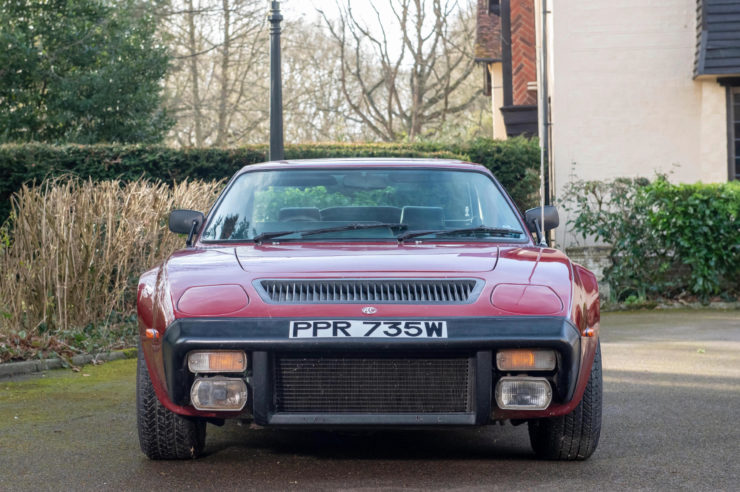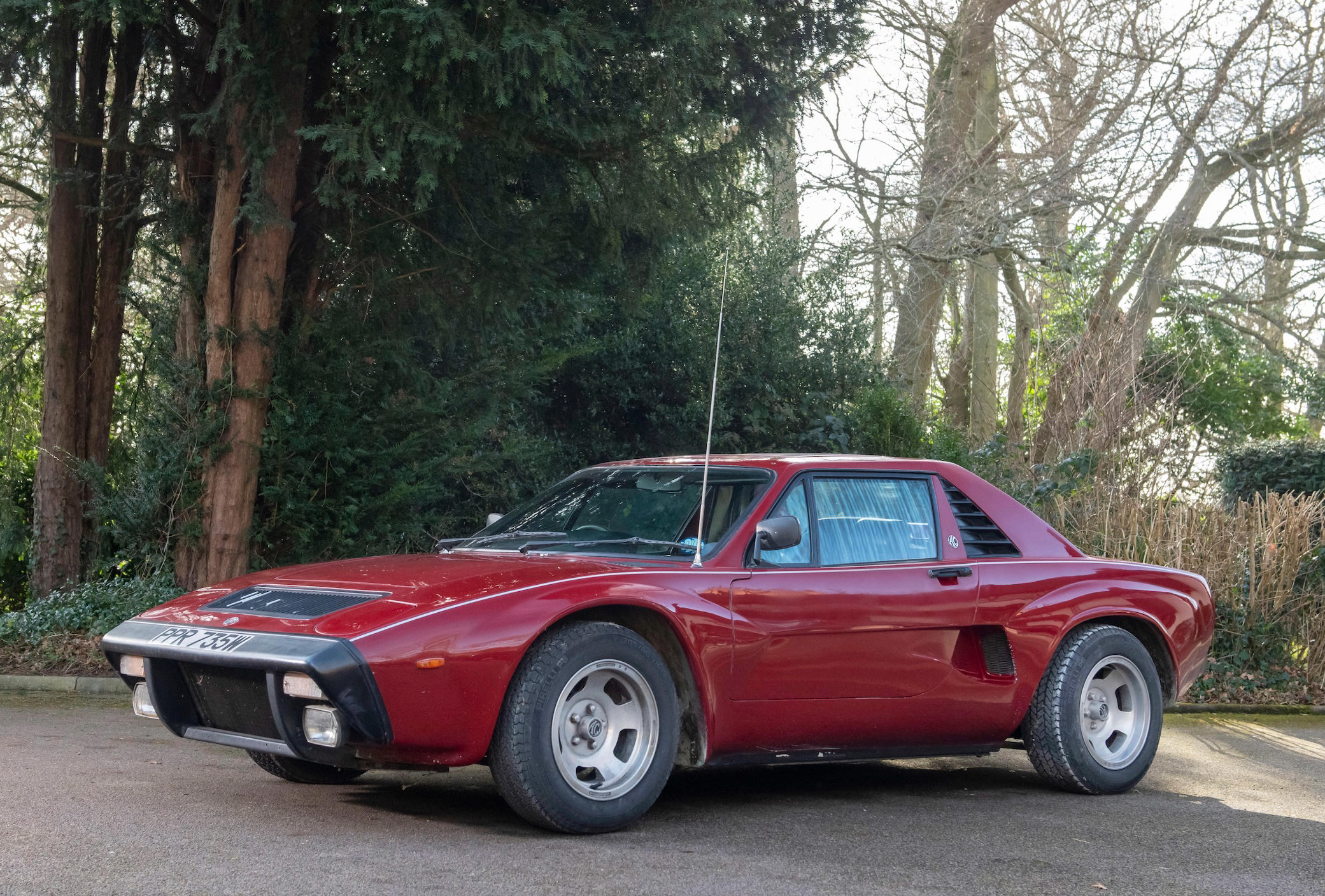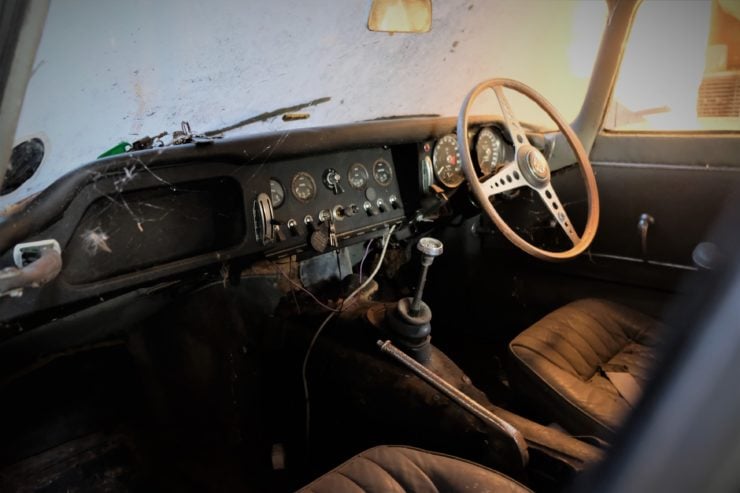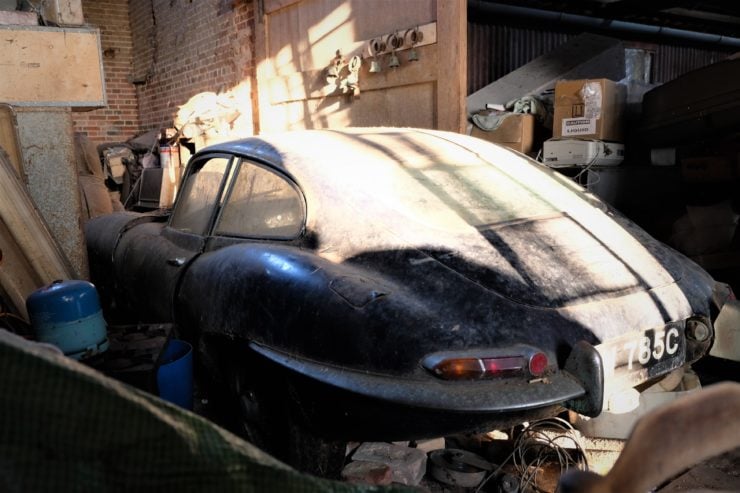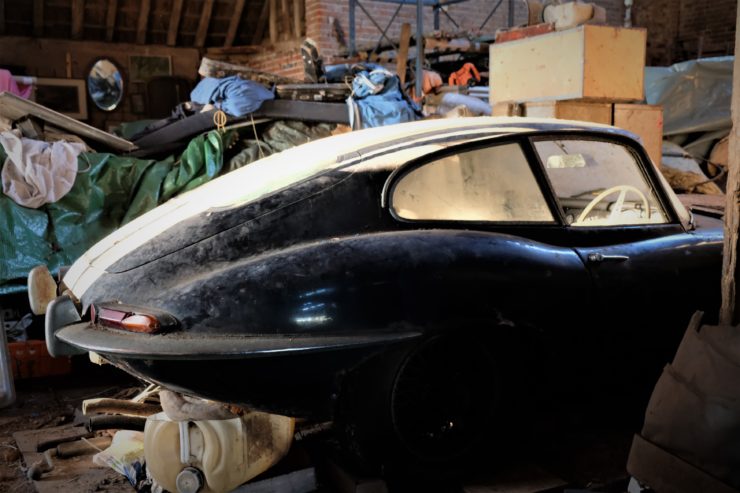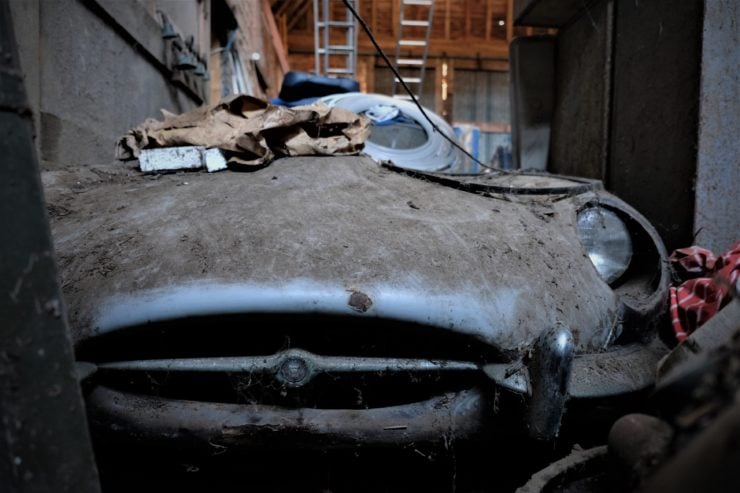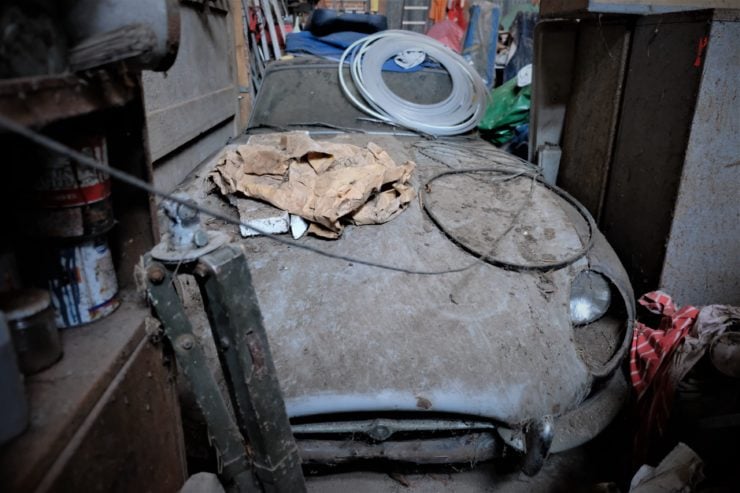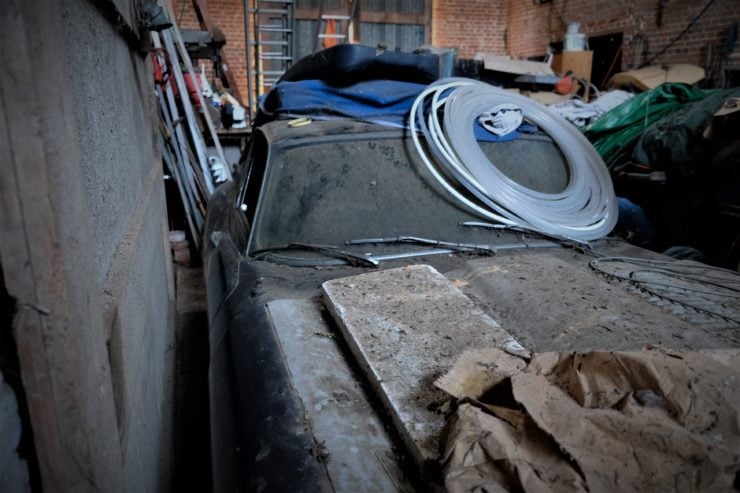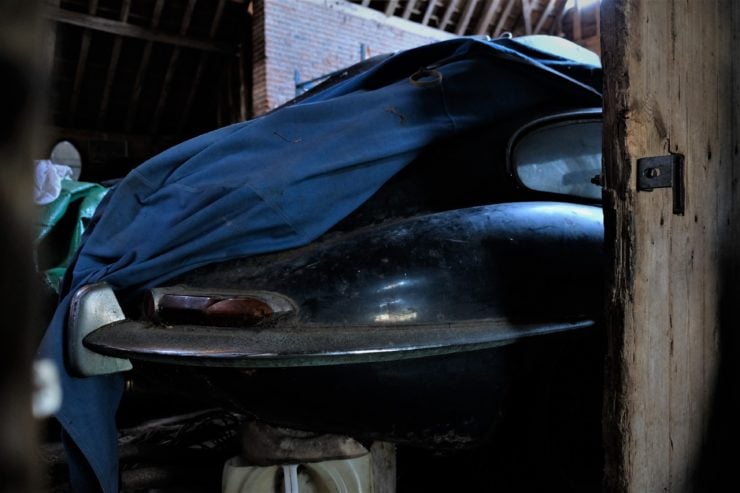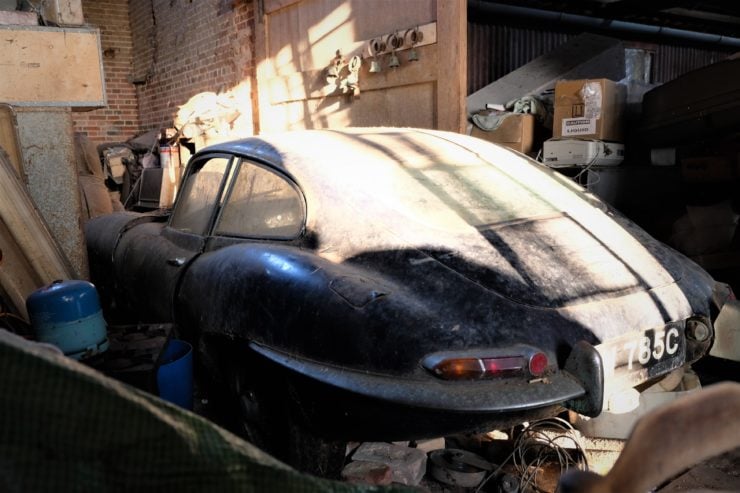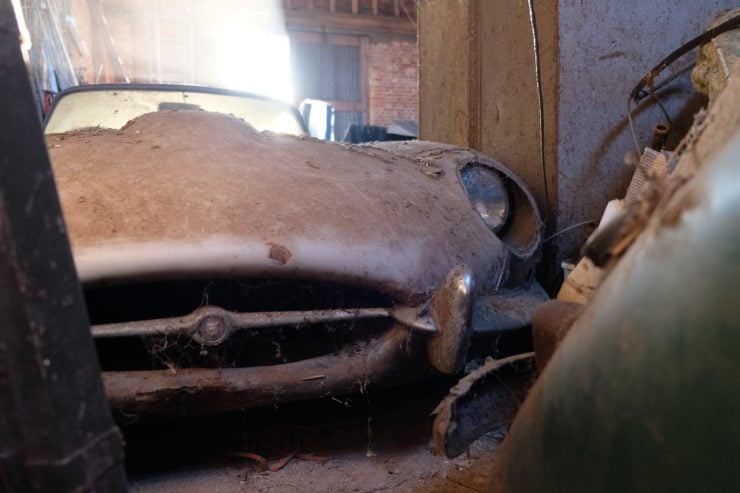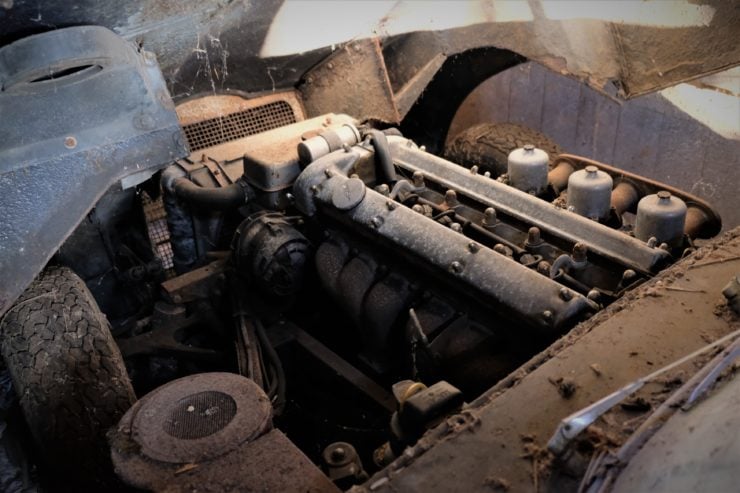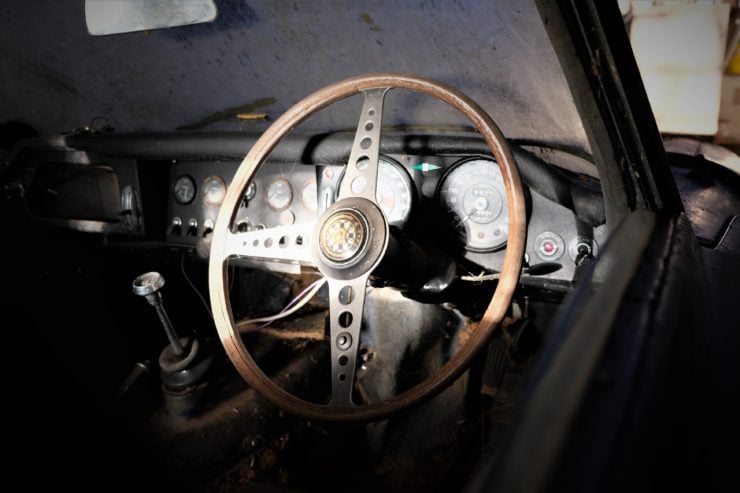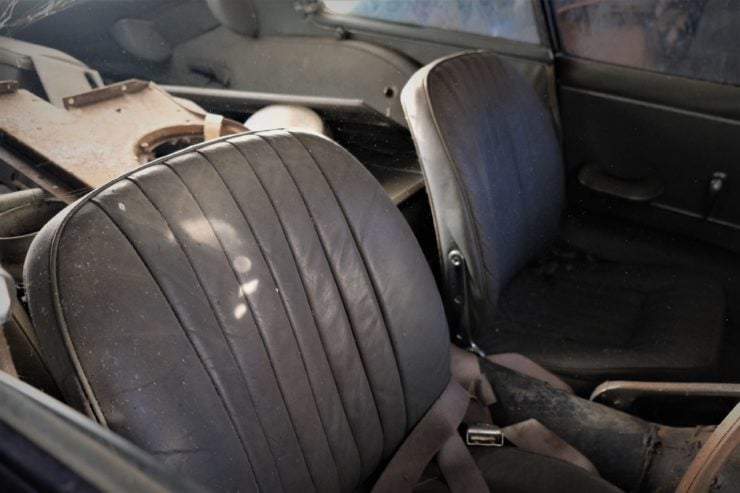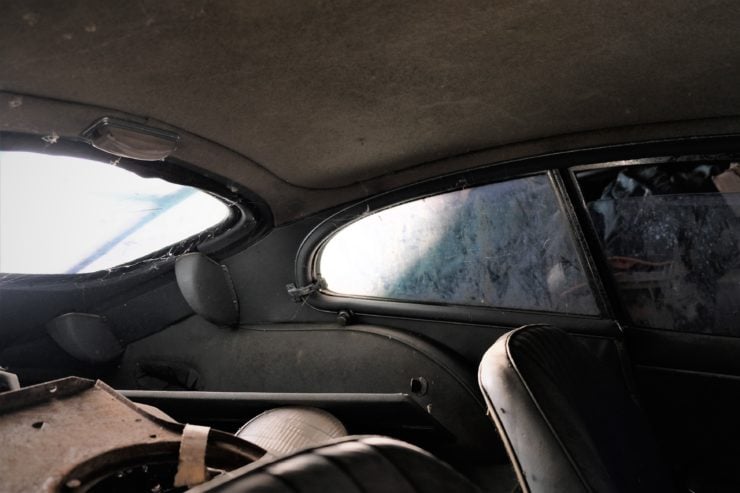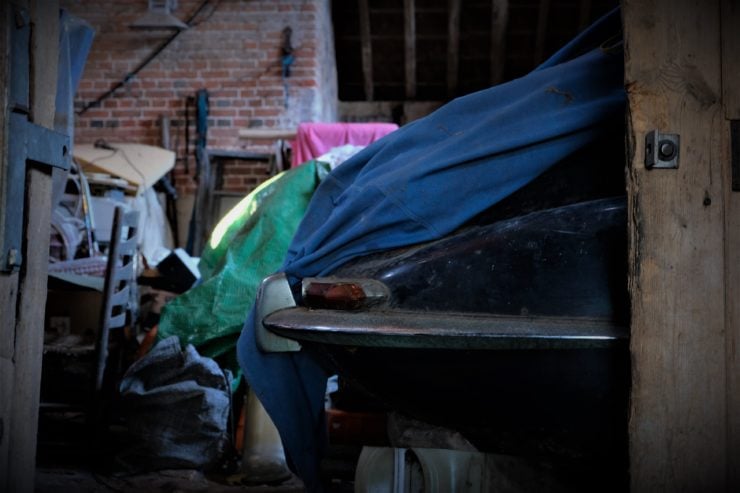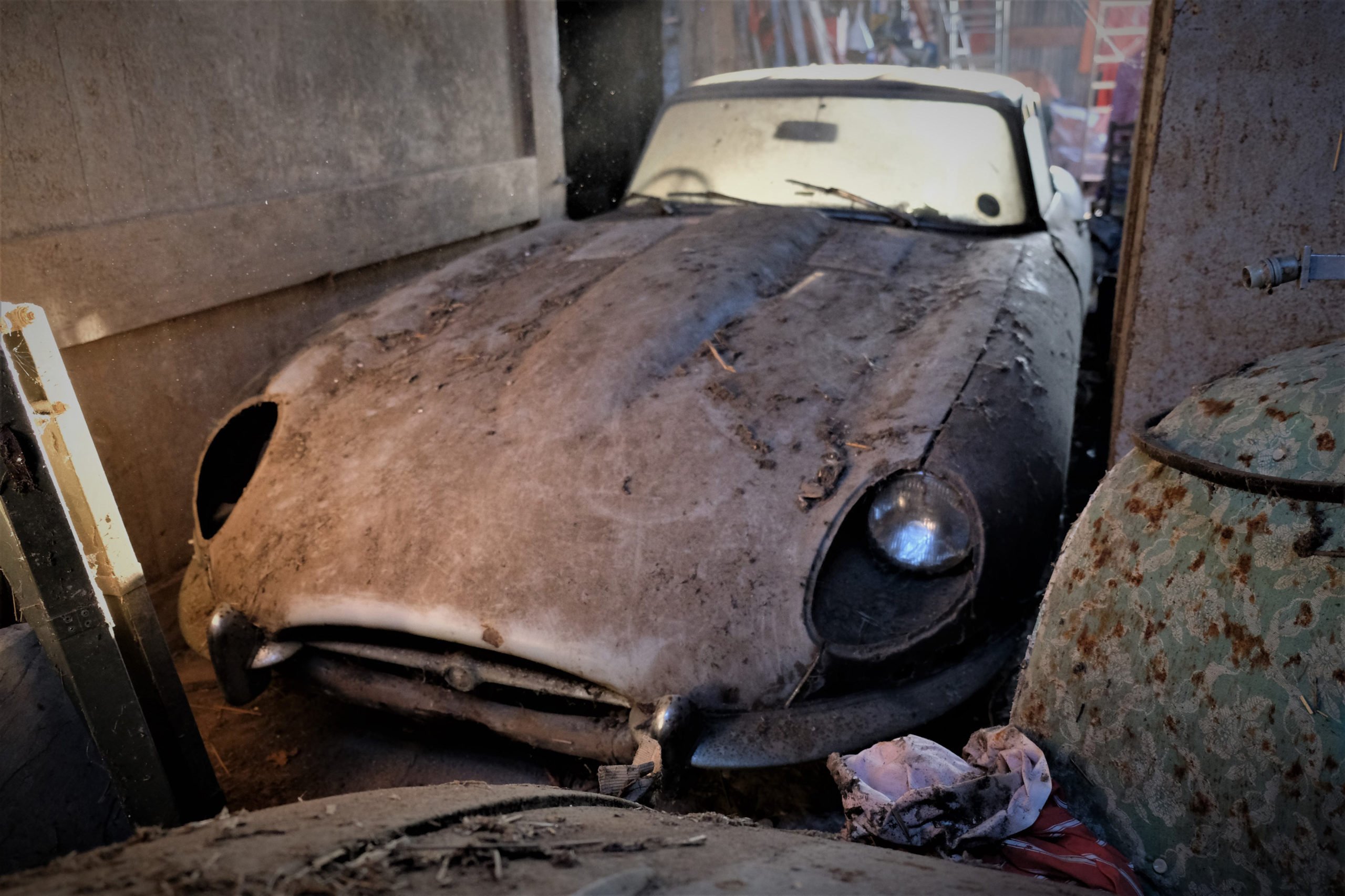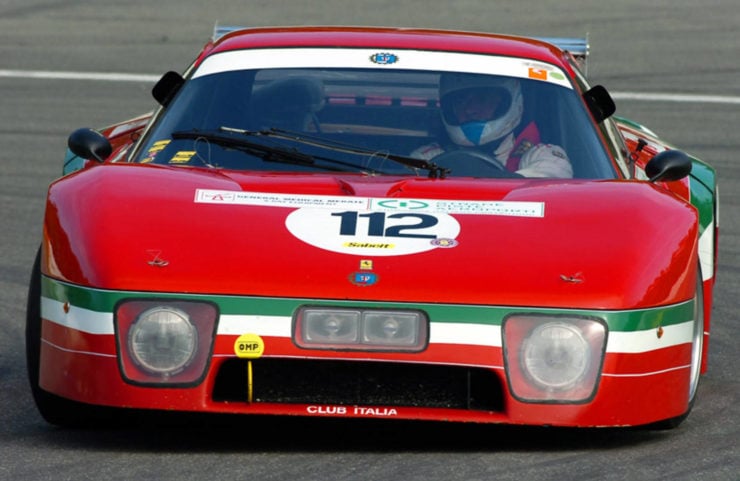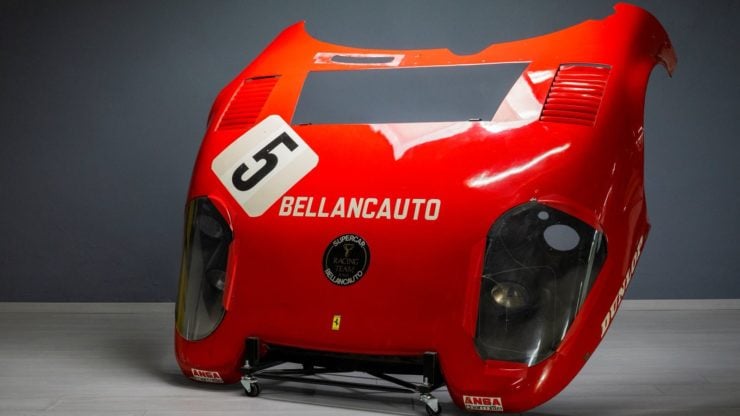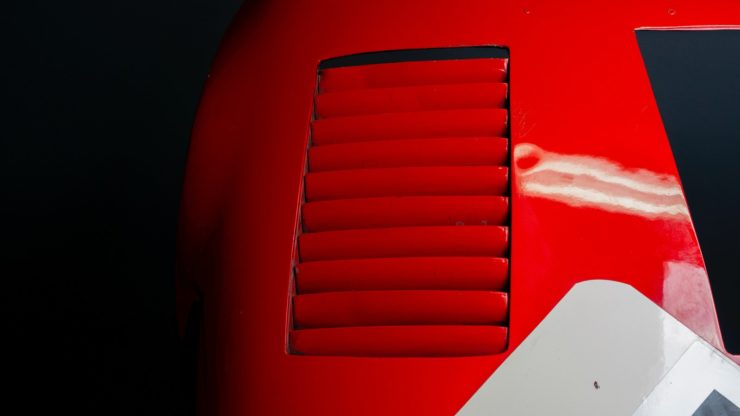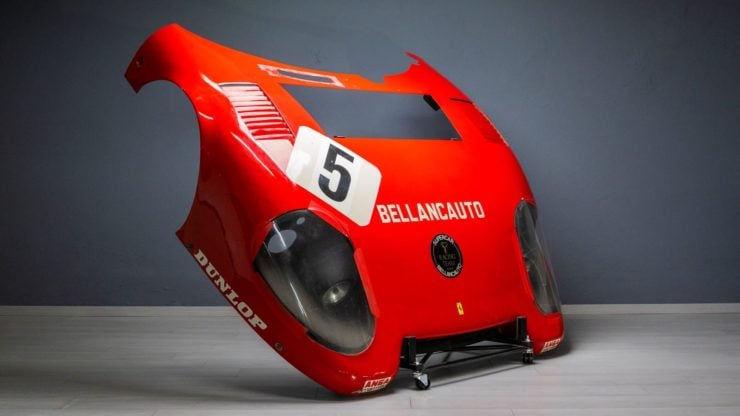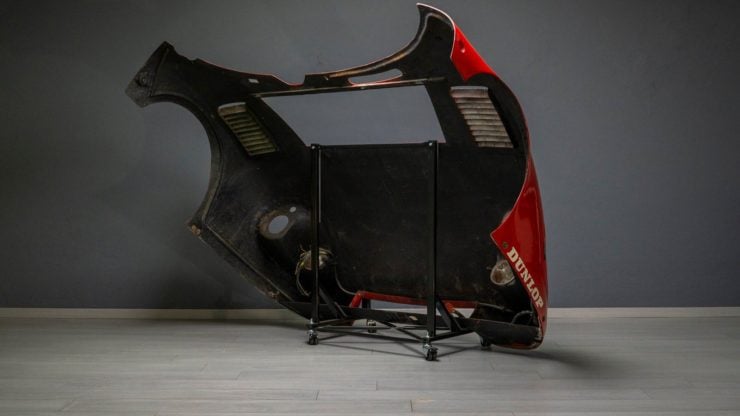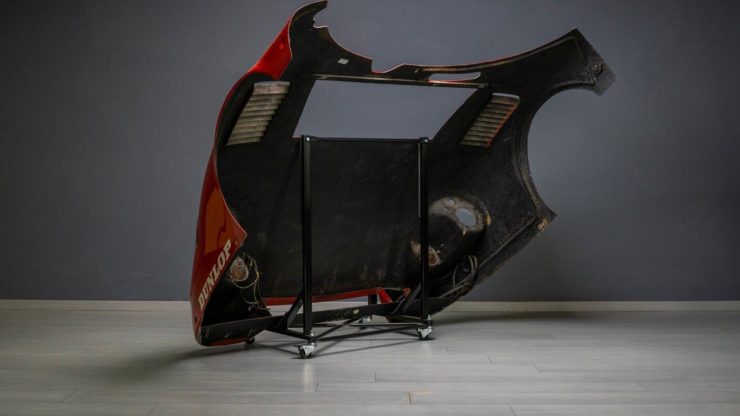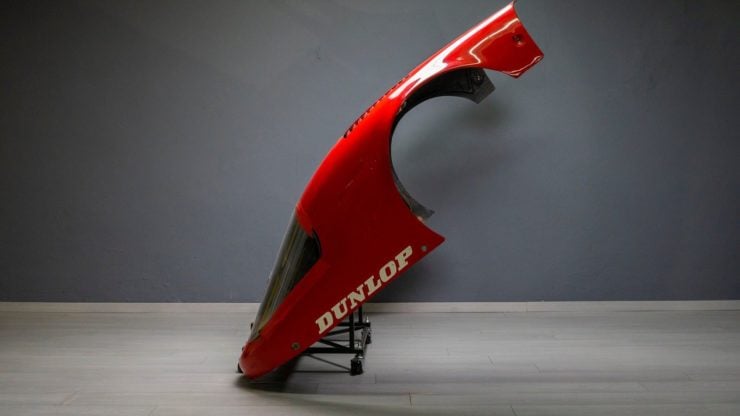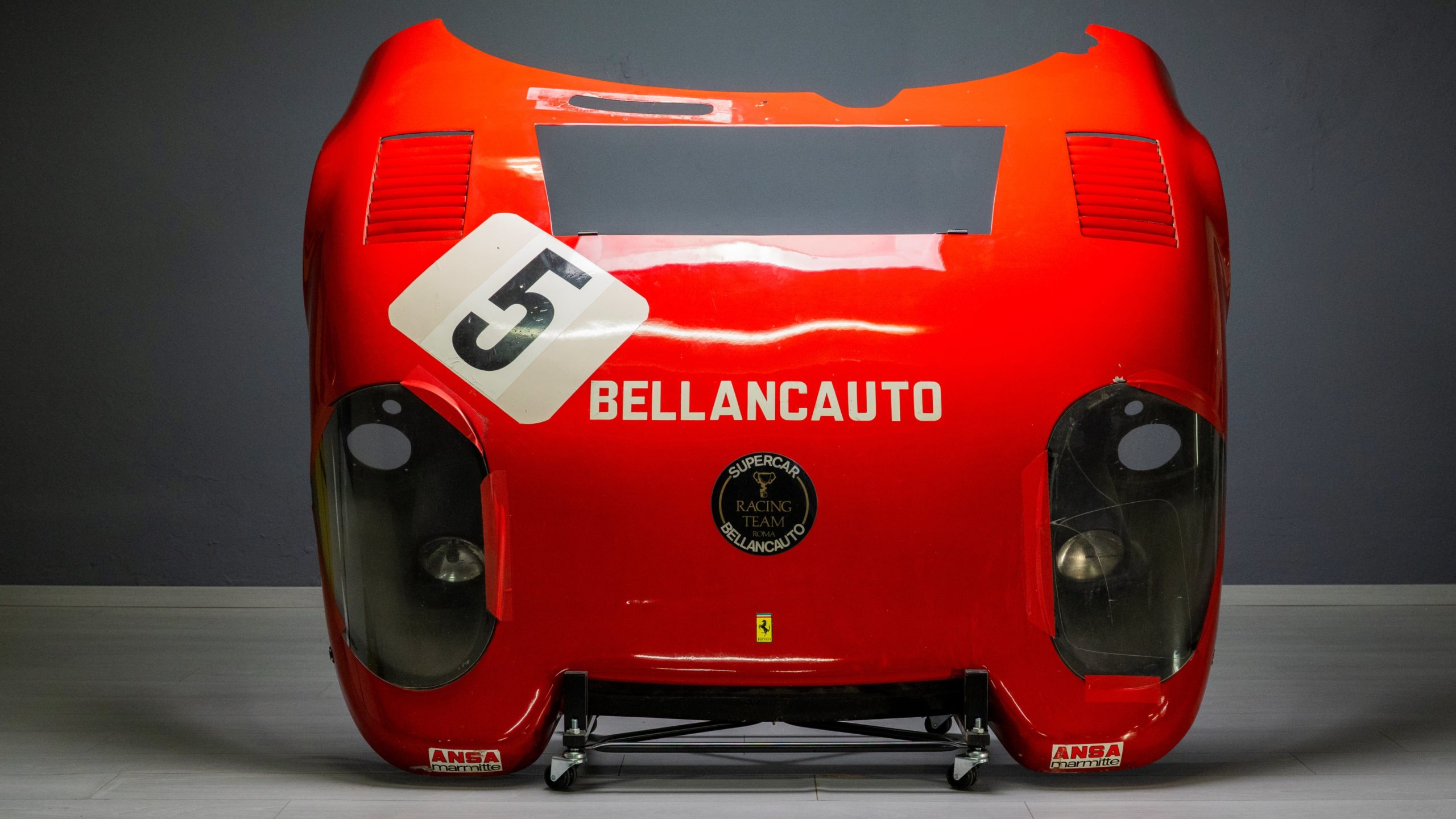This is David Carradine’s car from the 1975 dystopian sci-fi cult classic Death Race 2000. The film stars Carradine alongside Sylvester Stallone and Simone Griffeth, it centers around the Transcontinental Road Race – a race across the United States with no rules where many drivers don’t survive to the checkered flag.
Though this car looks like a custom rear-engined C3 Corvette it’s actually based on a Volkswagen chassis, and it’s powered by a Chevrolet Corvair flat-six which is hidden underneath the dummy engine visible in the rear.
Fast Facts – Mr Frankenstein’s Car From Death Race 2000
- This is the original Mr Frankenstein car from the 1975 film “Death Race 2000”, a dystopian sci-fi cult classic that may have influenced a number of films that have been made since, including “The Hunger Games” and “Death Proof.”
- Interestingly, “Death Race 2000” provided Sylvester Stallone with one of his final roles before he became a global celebrity after the success of Rocky a year later in 1976.
- The plot of “Death Race 2000” centers around the Transcontinental Road Race, a cross-country car race in which the drivers and their cars assume WWF wrestling-style personas and attempt to kill pedestrians for bonus points during the race.
- The car itself was designed and built by James Powers, Dean Jeffries, and George Barris. It’s based on a VW Beetle chassis and it’s powered by a rear-mounted Corvair flat-six engine. The fiberglass body somewhat resembles a C3 Corvette and it has a large faux engine atop the rear.
Death Race 2000 And The Transcontinental Road Race
Death Race 2000 became a cult classic almost as soon as it was released, it’s a film that was clearly not meant to be taken seriously and it’s permeated by dark humor, gratuitous gore, and some nudity – earning it an R-rating at the box office.
Above Film: This is the official trailer for Death Race 2000, the full film is available to watch on YouTube for free however be warned that it is R-rated and it includes nudity and plenty of violence.
Although this film isn’t particularly well known outside of film enthusiast circles it is notable for a number of reasons, and it likely had a significant influence on later films like “The Hunger Games” and “Death Proof.”
It would include Sylvester Stallone’s final performance as a little-known actor before he shot to fame in the 1976 film Rocky, which he both acted in and wrote the screenplay for. He was nominated for two Academy Awards for the film including Best Actor and Best Original Screenplay.
Death Race 2000 enjoyed no such awards, having received mixed reviews from period critics and only moderate success at the box office.
Mr Frankensein’s Alligator Car
The car you see here was built alongside the other four, making five in total. They were designed and created by James Powers, Dean Jeffries, and George Barris with unique fiberglass bodies designed to complement the WWF wrestling-type persona’s of their respective drivers.
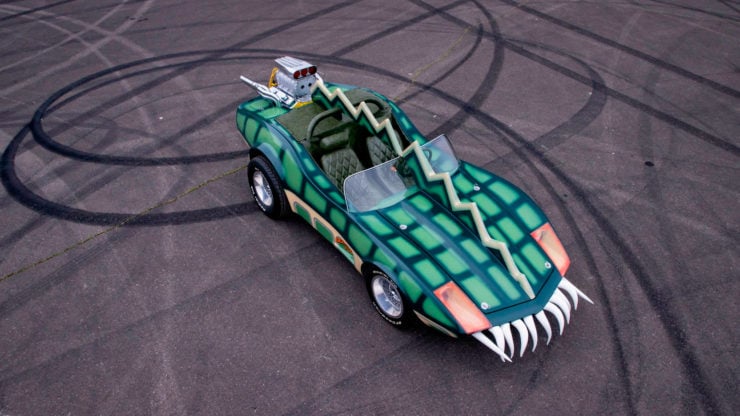
The design team gave each of the five cars in the film its own character, this one is an “alligator,” with a large faux-V8 in the back over the top of the real engine – a Corvair flat-six.
At first glance, the “Alligator Car” driven by Mr Frankenstein appears to be a modified C3 Corvette with a truncated wheelbase, however it’s actually based on a VW Beetle platform – though it appears that some modified Corvette body parts have been used in the construction of the custom fiberglass body.
The original Beetle flat-four engine was deemed insufficiently powerful, so it was replaced with a Corvair flat-six feeding power into a three-speed manual transmission.
A faux-V8 with a supercharger was created and fitted over the Corvair engine extending up above the rear trunk lid, in order to give the illusion of considerably more power.
This car is used extensively in the film, it’s been well preserved over the intervening years and it’s now being offered for sale through Mecum in mid-March with a price guide of $30,000 to $50,000 USD.
If you’d like to read more about it or register to bid you can click here to visit the listing.

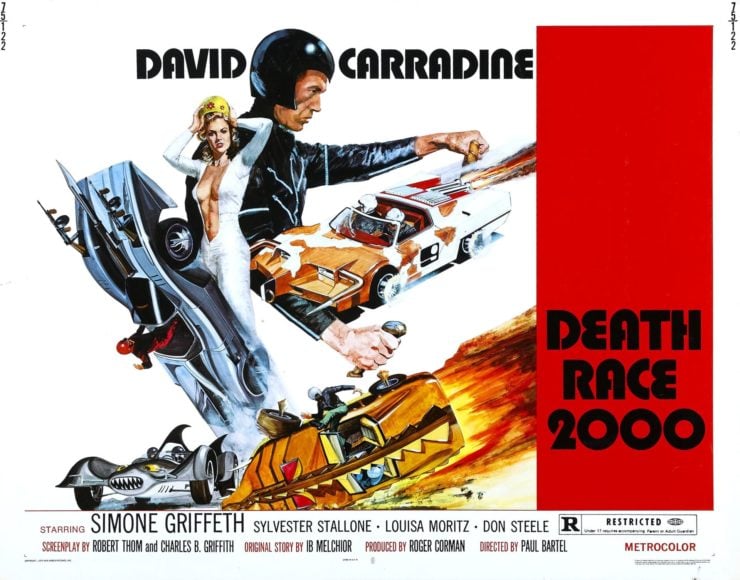

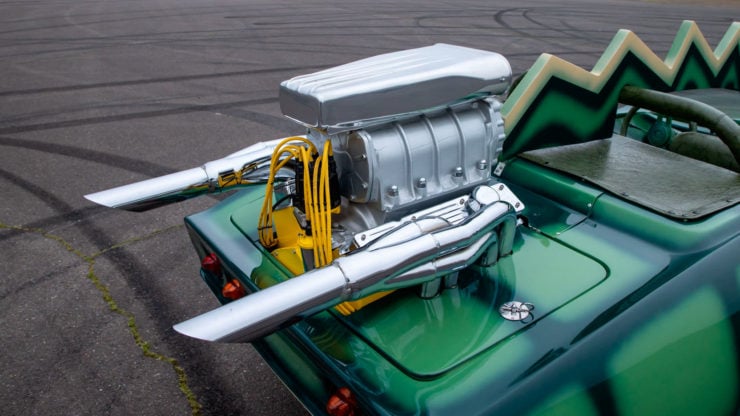

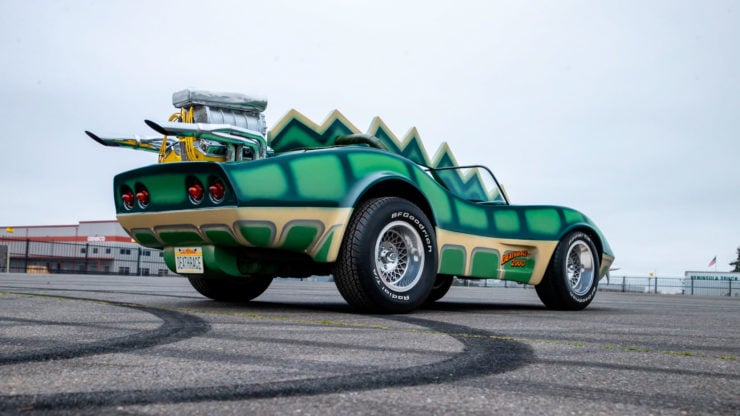
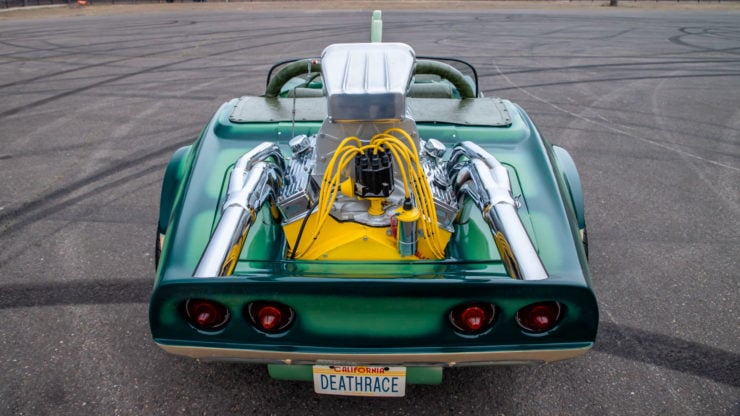
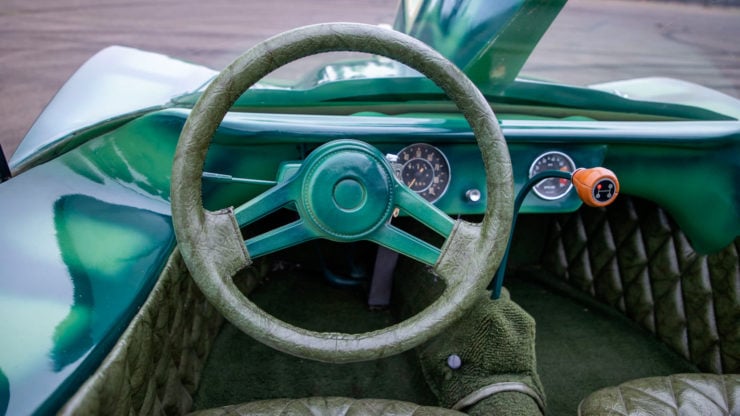
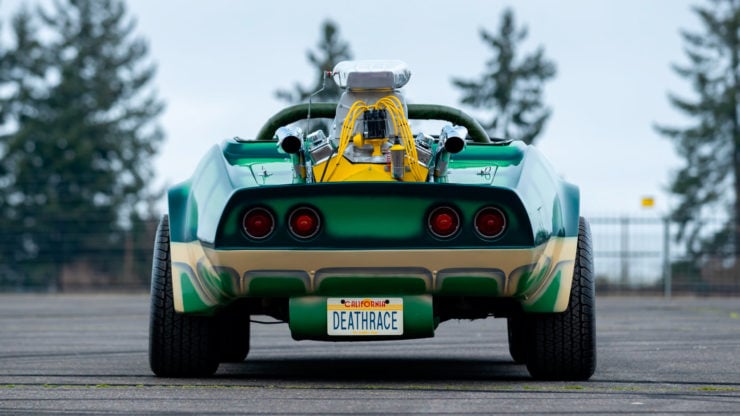
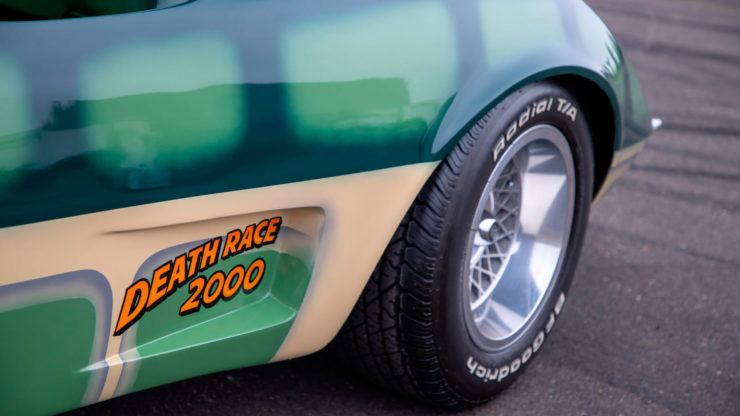
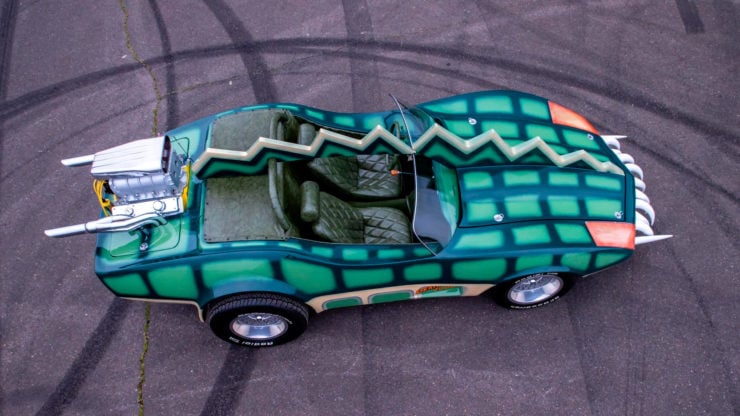
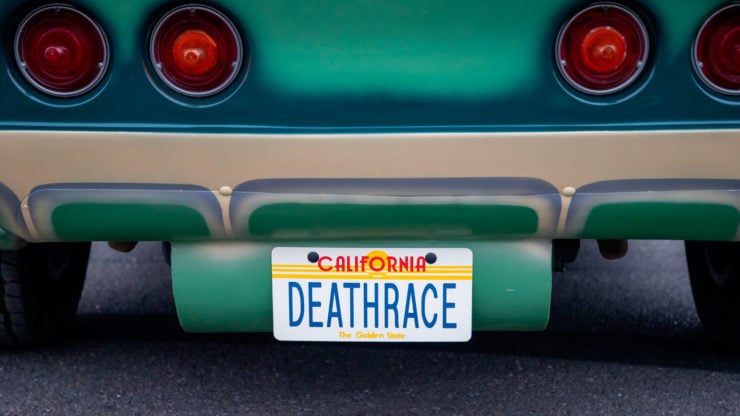
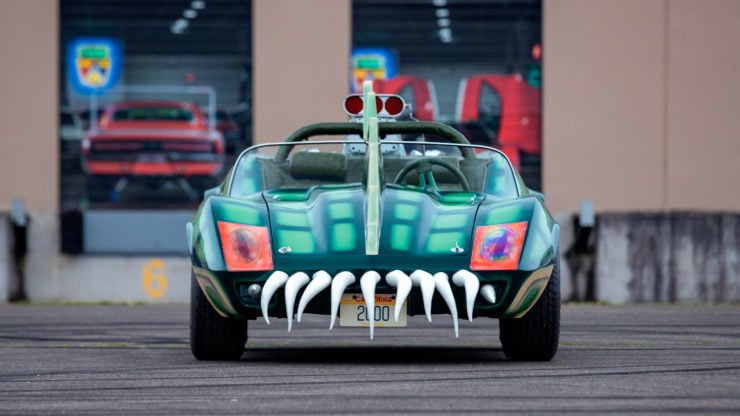
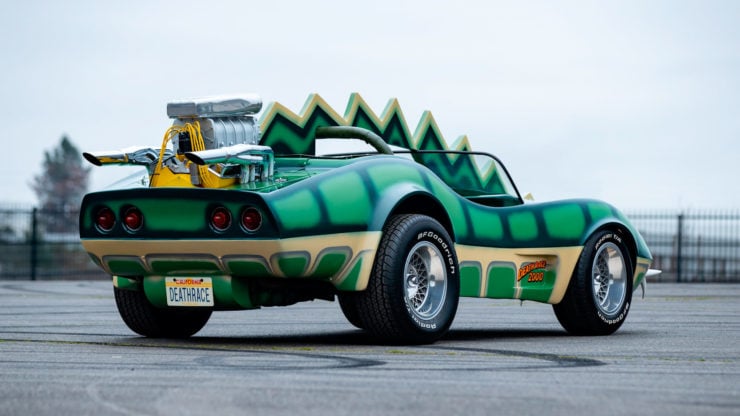
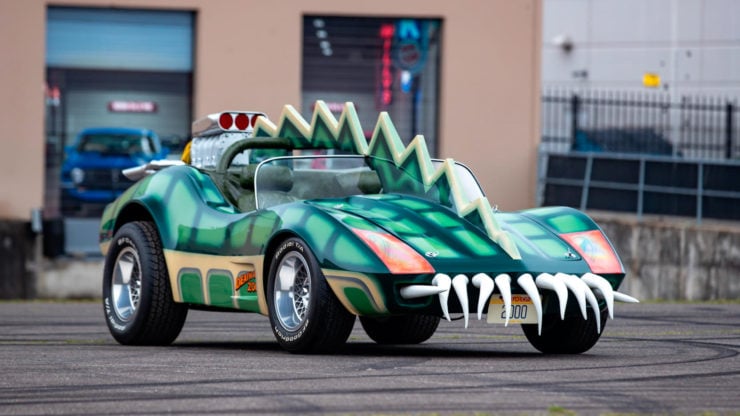
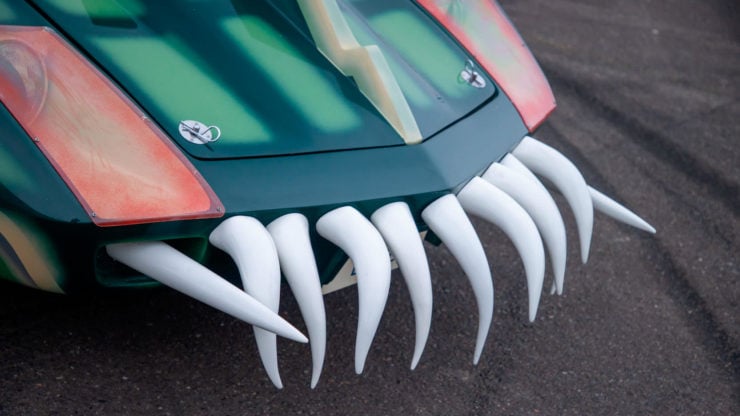
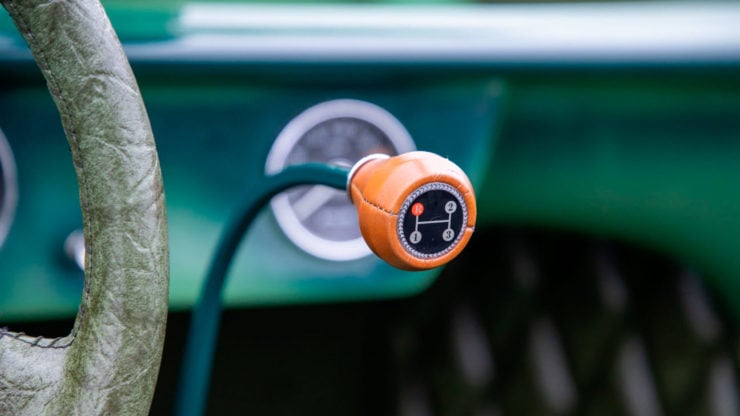
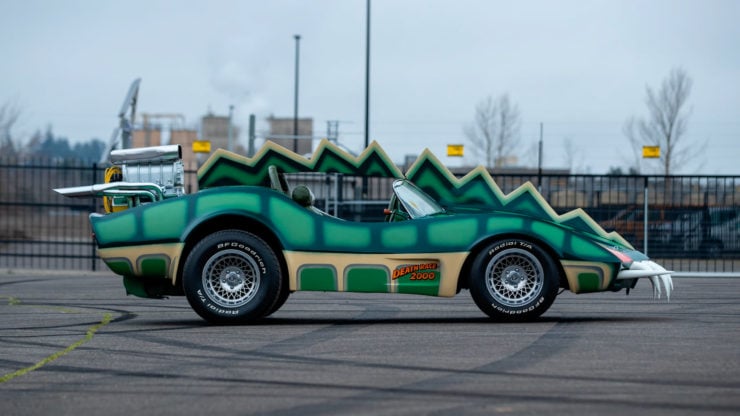

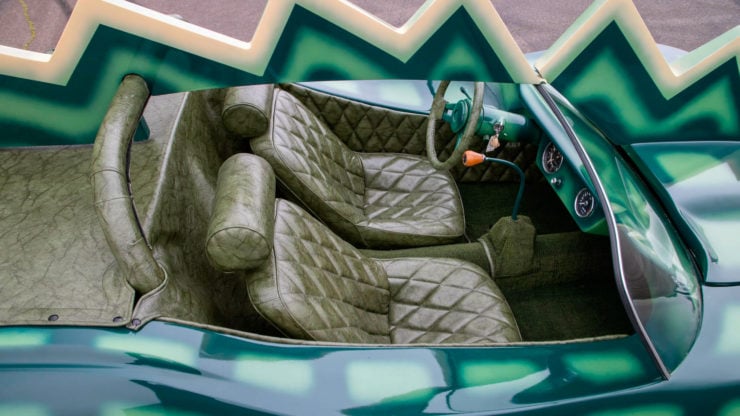

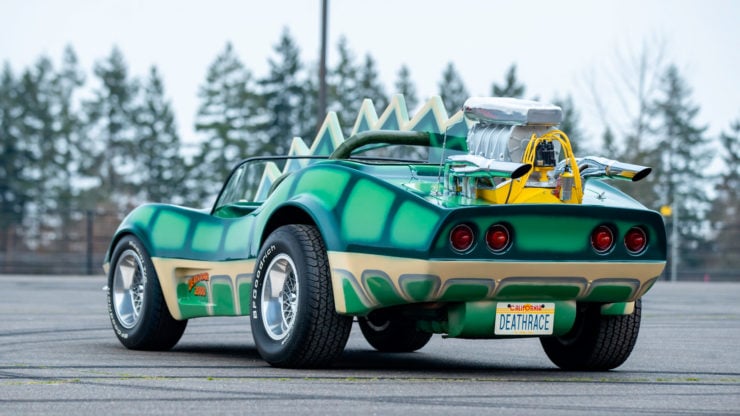
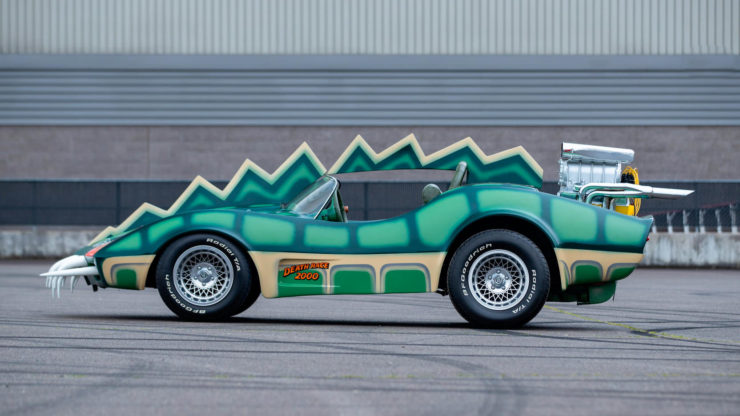
Images courtesy of Mecum
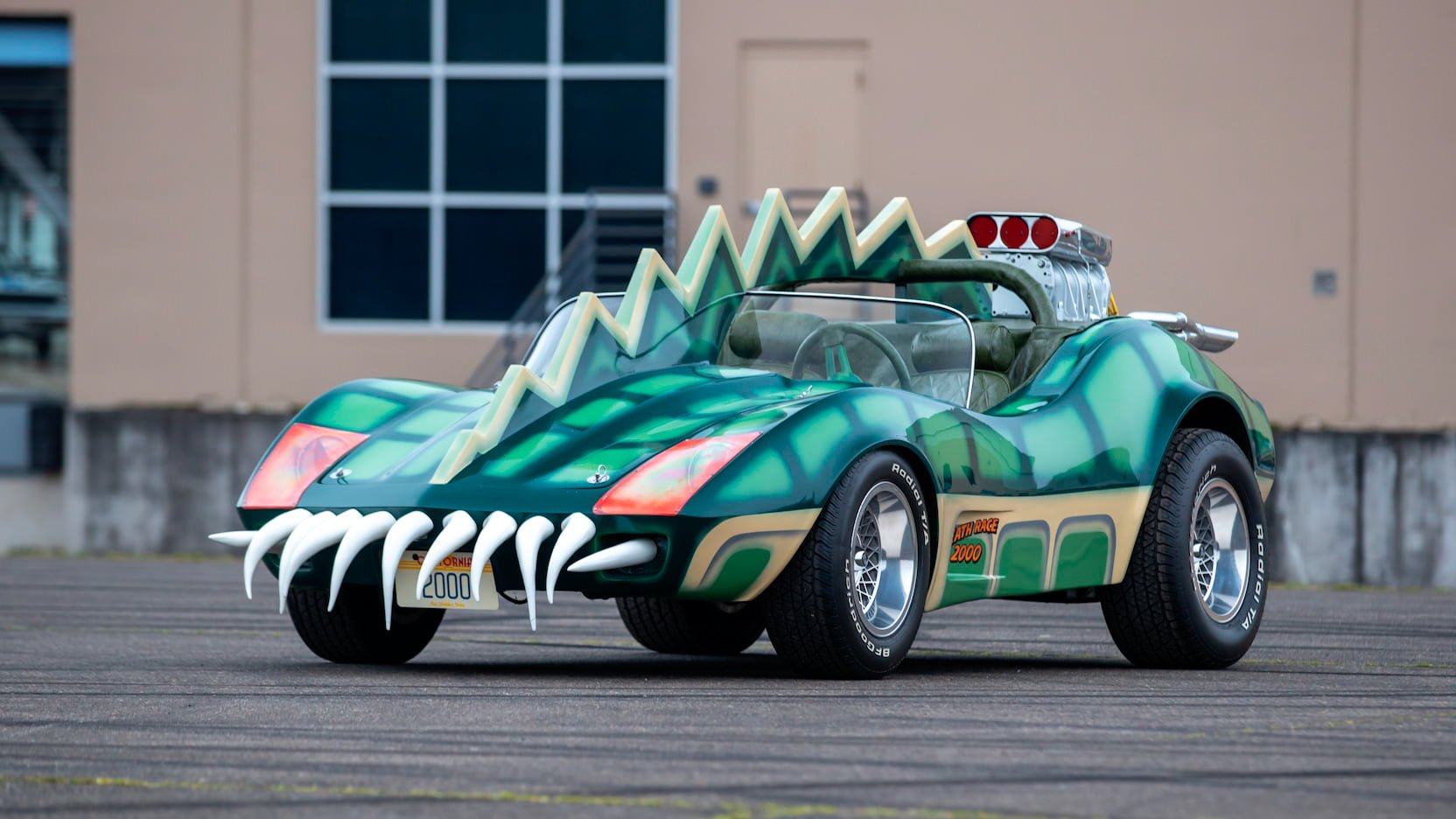
The post For Sale: David Carradine’s Alligator Car From “Death Race 2000” appeared first on Silodrome.
from Silodrome https://silodrome.com/death-race-2000-david-carradine-car/
via gqrds
